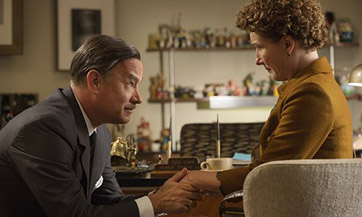|
|
The 400-Word Review: Saving Mr. BanksBy Sean CollierDecember 23, 2013
If that doesn’t strike you as particularly watchable, that’s because it is not. In adulthood, then, Travers is surly, disagreeable and often outright rude. We’re meant to be amused by seeing this sort of staunch British propriety in diametric opposition to the jovial familiarity of golden-age Disneyland, but the result instead is upsetting; there’s very little sympathizing with a character who stays nasty while an army attempts to please her. The fault isn’t on Thompson or Hanks, who play the hands they’re dealt earnestly. The supporting cast, too, is game, including B.J. Novak and Jason Schwartzman as the Sherman brothers, the composers and lyricists behind Poppins. The scenes in California are tantalizing and visually fascinating, combining a “Mad Men”-esque attention to period detail with the technicolor playfulness of Disney’s studios; the Australian sequences, however, look like a dozen other uninteresting recent films (think, appropriately enough, Australia). The fatal problem is the focus of the story, which lends itself only to consternation and woe; hardly appropriate for a reflection on Mary Poppins. There was an interesting story to be told here; the writers simply neglected to tell it. Sean Collier is the Associate Editor of Pittsburgh Magazine and a member of the Broadcast Film Critics Association. Read more from Sean at pittsburghmagazine.com/afterdark
[ Read more 400 word movie reviews ]
[ View other movie reviews ]
[ View other columns by Sean Collier ] [ Email this column ]
|

|
|
|

|
Thursday, October 31, 2024
© 2024 Box Office Prophets, a division of One Of Us, Inc.


